2.1 Motion
Displacement and Distance
Velocity and Speed
| Velocity | Speed |
|---|---|
| -Vector Rate of change of displacement in respect to time |
-Scalar Rate of change of distance in respect to time |
Acceleration
| Acceleration |
|---|
| -Vector Rate of change of velocity in respect to time |
**Acceleration is a vector and thus has a direction. If we assume the upwards direction to be positive, the acceleration due to gravity would have a negative value.
Motion Graphs
Displacement-time graph
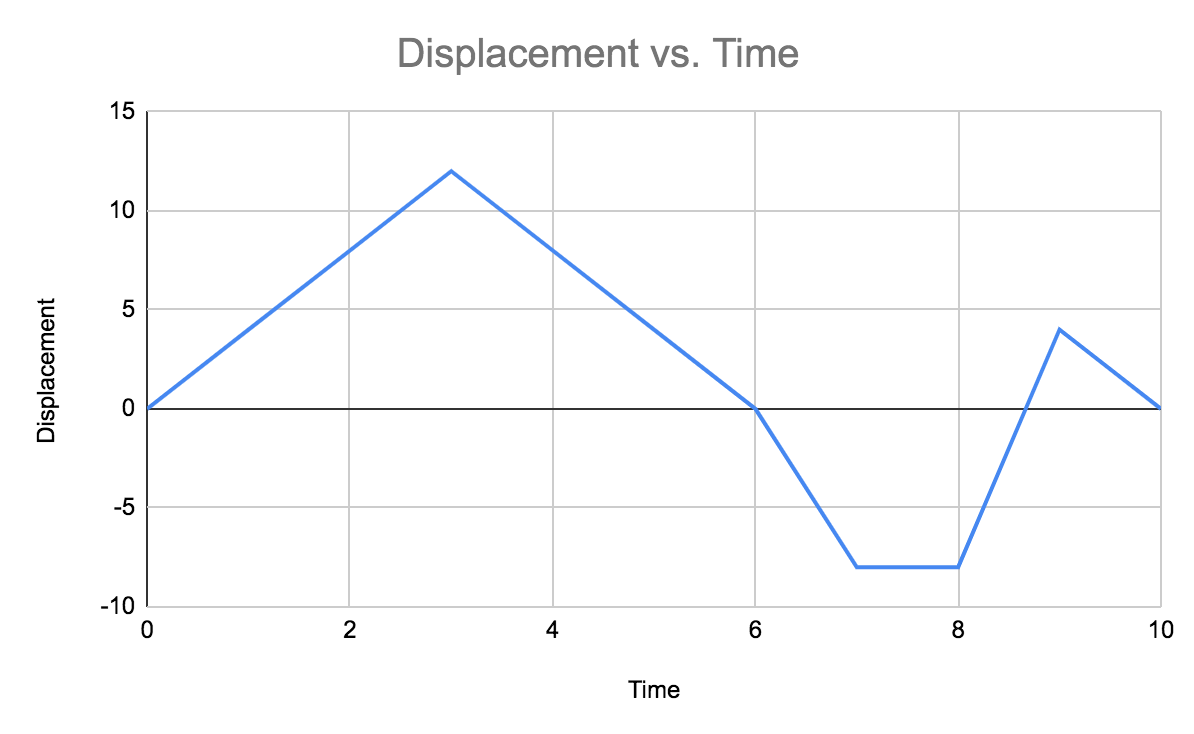
*Slope is velocity
Velocity-time graph
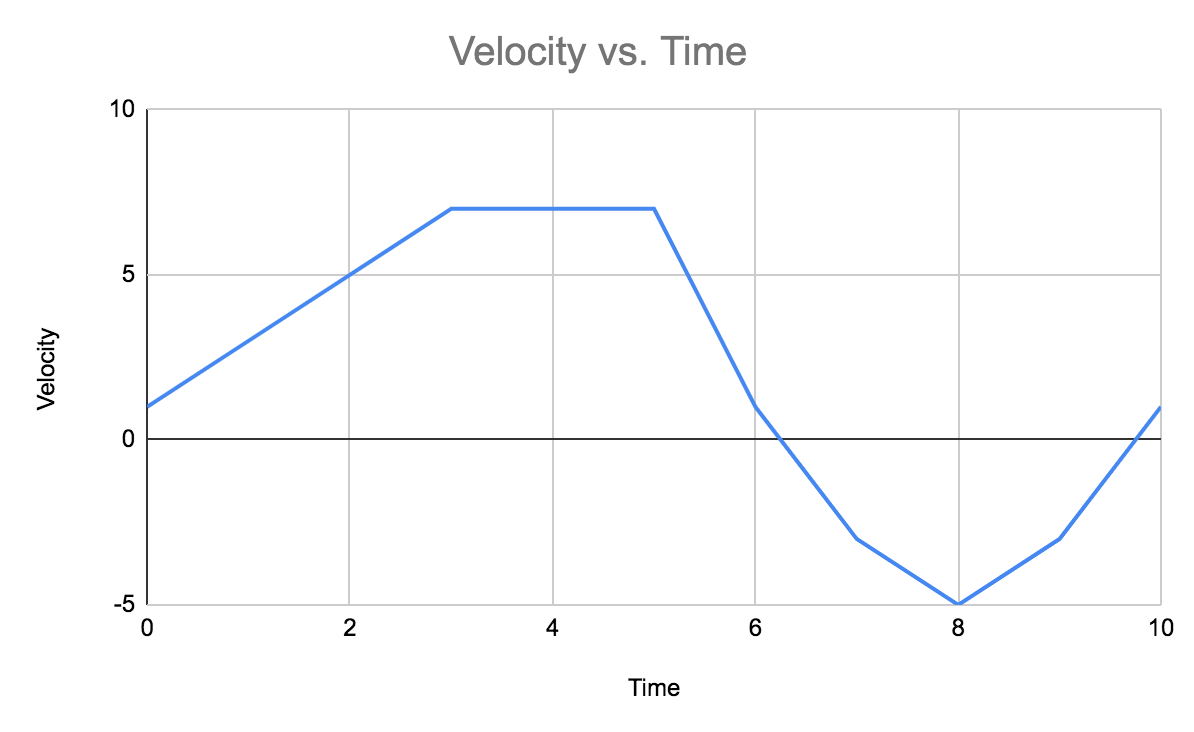
*Slope is acceleration **Area under the curve is displacement
Acceleration-time graph

*Area under the curve is change in velocity
Understanding with calculus
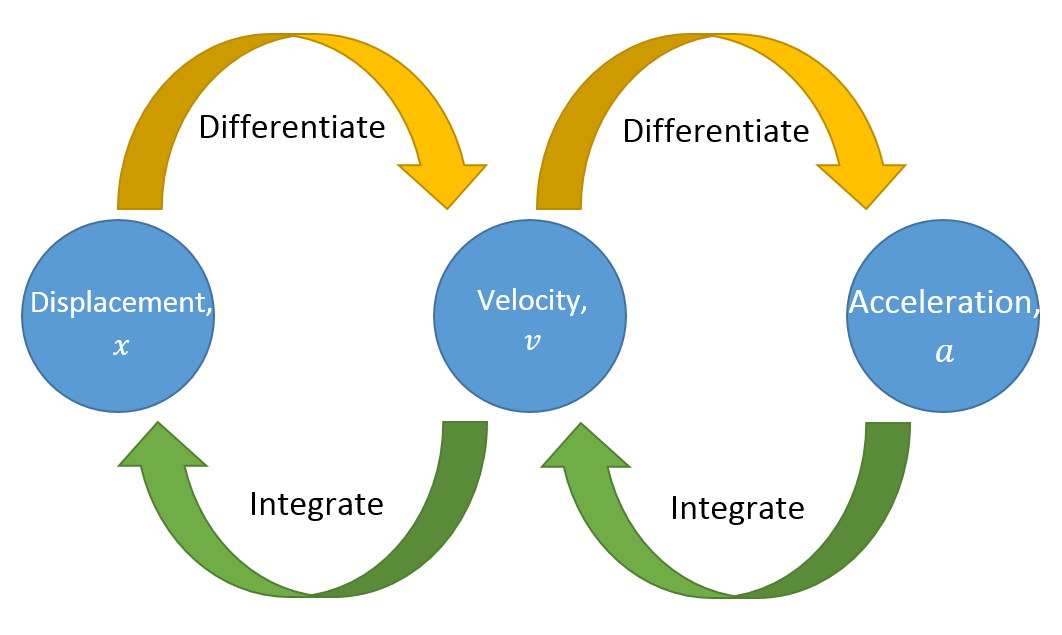 Motion graphs help tool
Motion graphs help tool
Suvat equations
*acceleration must be constant!
Projectile motion
An object follows a curved path due to the influence of gravity.
If no air resistance:
The horizontal component is constant
The vertical component accelerates downward at 9.81 ms-2
The projective reaches maximum height when vertical velocity is 0
The trajectory is symmetric

If air resistance is present:
The maximum height is lower
The trajectory is not symmetric
The range of projectile is shorter
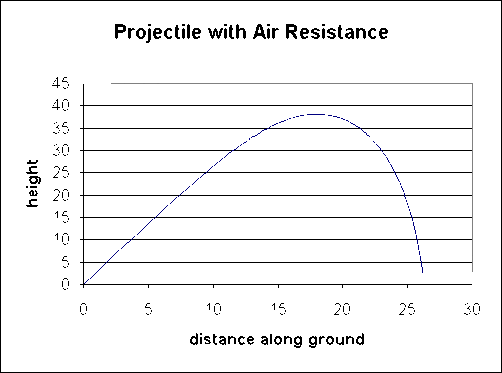
Terminal velocity
When the force of air resistance is equal to the force of gravity on a falling object
The specific velocity at which one stops accelerating is known as terminal velocity
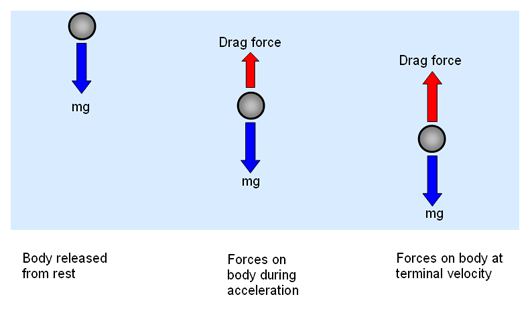
2.2 Forces
Free body diagrams
ForcesUnit of force is Newtons are represented as arrows acting on a point mass.
The lenght and direction depends on the magnitude and direction of the force.

To determine resultant force:
1.Resolve the forces into vertical and horizontal components
2.Combine the sum of horizontal and vertical components
3.Find the angle by using tangent
Transitional equilibrium
The net force on the body is zero, so the body is at rest or travels at constant velocity.
Examples: elevator moving upwards at constant velocity, a falling man reaches terminal velocity.
Newton's laws of motion
Published in Philosophiae Naturalis Principia Mathematica (1687)
1.If a body is at rest or moving at a constant speed in a straight line, it will remain at rest or keep moving in a straight line at constant speed unless it is acted upon by a force. This postulate is known as the law of inertia.
2.F=ma
3.When two bodies interact, they apply forces to one another that are equal in magnitude and opposite in direction. The third law is also known as the law of action and reaction.
Friction
FrictionDenoted by µ is a force opposing motion, where to solid surfaces move against each other.
There are two types of friction for solids: static (stops object from beggining motion) and kinetic (slows down objects motion).
Static friction (µs) is larger than kinetic friction(µk).

2.3 Work, energy, and power
Kinetic energy
Gravitational potential energy
Elastic potential energy
Work done
In a force-displacement graph, work is the area under the curve

Power
For a constant force acting on object with constant velocity:
Conservation of energy
Energy cannot be created or destroyed, only converted into different form. For example when kicking a football that is sitting on the ground, energy is transferred from the kicker's body to the ball, setting it in motion.
Demonstration of the conservation of energyTotal energy remains constant:
Efficiency
2.4 Momentum
Linear momentum
The change of momentum is called impulse
Impulse formula
Impulse and force-time graphs
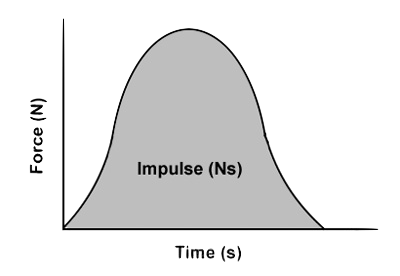
The area under the force-time graph is impulse
Conservation of linear momentum
In a closed system, the sum of initial momentum is equal to the sum of final momentum
Collisions
| Type | Total Momentum | Total Kinetic energy |
|---|---|---|
| Elastic | Conserved | Conserved |
| Inelastic | Conserved | Not conserved |
| Explosion | Conserved | Not conserved |


Topic 2 Problems
Number of correct answers: